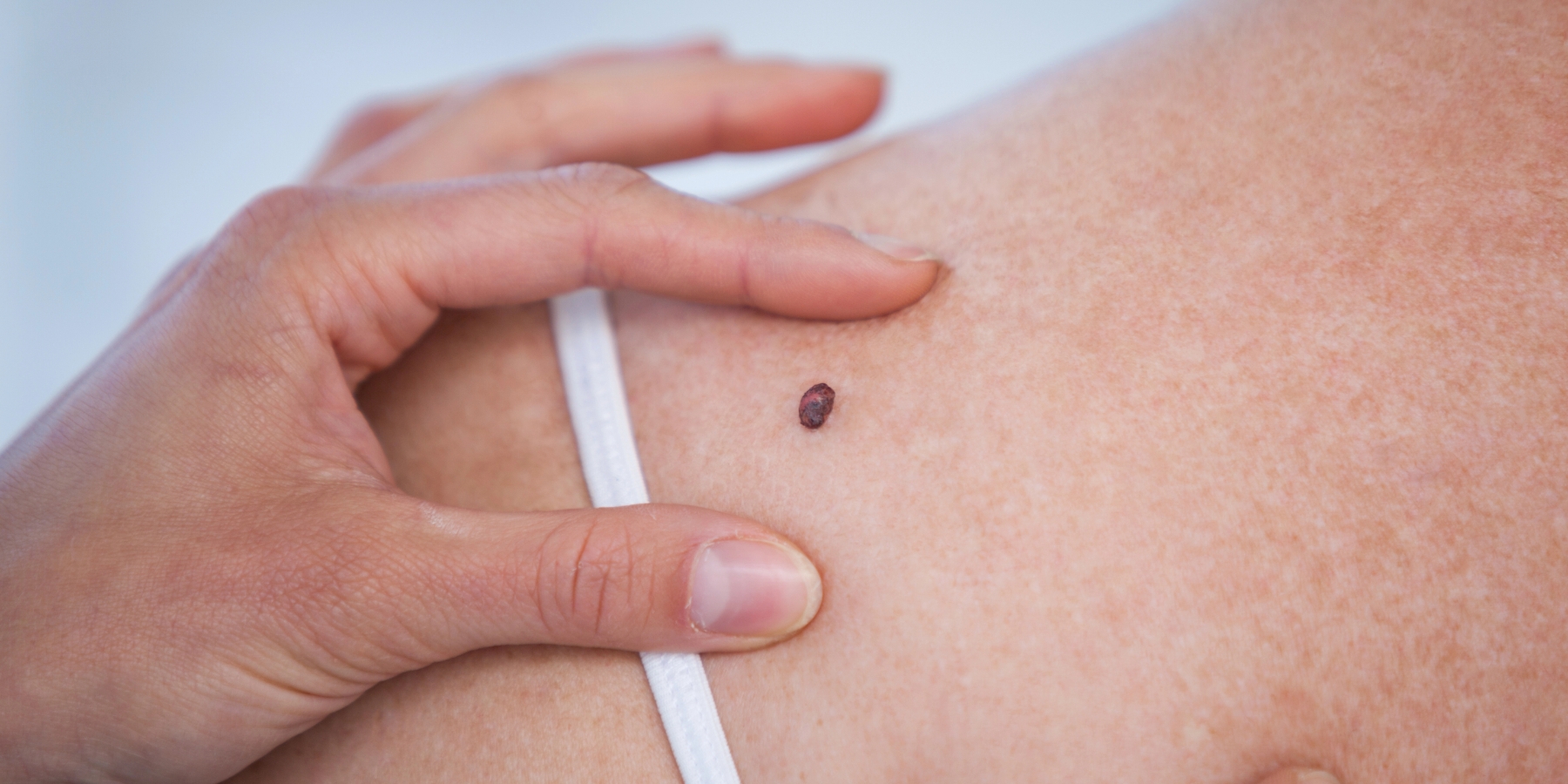
Most people have moles, warts, skin tags, or other benign (non-cancerous) lumps and bumps on their skin at some point in their lives. While these growths are usually harmless, they can sometimes be unsightly or cause discomfort. What’s more, with the prevalence of skin cancer, these growths are a cause for potential concern and should be evaluated. That’s why it’s important to seek a consultation with one of medical dermatologists at Houston Skin to evaluate any growths you may have. While most mysterious lumps are benign, they can also often be quickly removed using the latest cosmetic techniques, restoring the smoothness of your skin along with your confidence and self-esteem. We offer a variety of safe and effective treatment options to help you achieve clear, healthy skin.
Understanding Moles, Warts, Skin Tags, and Benign Lumps and Bumps
- Moles: Moles are growths on the skin that are typically brown or black. They are caused by clusters of pigment cells. Most moles are harmless, but some can develop into melanoma, a type of skin cancer.
- Warts: Warts are caused by a virus called the human papillomavirus (HPV). They can appear anywhere on the body and are often rough and bumpy.
- Skin Tags: Skin tags are small, soft, skin-colored growths that hang off the skin. They are common in areas where skin rubs together, such as the neck, armpits, and groin.
- Benign Lumps and Bumps: There are many other types of benign lumps and bumps that can occur on the skin. These include cysts, lipomas, and dermatofibromas.
When to Seek Treatment
While most moles, warts, skin tags, and benign lumps and bumps are harmless, it is important to see a dermatologist if you notice any of the following:
- A change in the size, shape, or color of a mole
- A new mole
- A mole that is bleeding, itching, or painful
- A wart that is painful or spreading
- A skin tag that is irritating or unsightly
- Any new or concerning lump or bump on your skin
Treatment Options
At Houston Skin Associates, we offer a variety of treatment options for moles, warts, skin tags, and benign lumps and bumps. These include:
- Mole Removal: Moles can be removed for cosmetic reasons or if they are suspected to be cancerous. We offer a variety of mole removal techniques, including shaving, surgical excision and laser removal.
- Wart Treatment: Warts can be treated with topical medications, cryotherapy (freezing), electrosurgery, salicylic acid, or immune modulating modalitites.
- Skin Tag Removal: Skin tags can be removed by freezing, cauterization (burning), or surgical excision.
- Treatment for Benign Lumps and Bumps: The treatment for benign lumps and bumps will vary depending on the type of growth. We offer a variety of treatment options, including surgical removal, injection therapy, and laser therapy.
Meet The Team
Our Houston team of Board-Certified Dermatologists and licensed skin care providers brings a wealth of experience and a passion for healthy skin. With extensive clinical experience and the highest levels of training, our doctors are committed to delivering exceptional care and achieving optimal results for every patient. We prioritize your comfort and safety, promoting a positive and reassuring experience throughout your journey to vibrant skin. We’re honored to be your trusted provider of quality medical dermatology care and your partners in achieving and maintaining your skin’s health.
Understanding Your Risk Factors
Certain factors can increase your risk of developing moles, warts, skin tags, and other benign lumps and bumps. These factors include:
- Sun exposure: Excessive sun exposure can increase your risk of developing moles, especially atypical moles which can sometimes develop into melanoma. Always practice sun safety and wear sunscreen daily.
- Genetics: Some people are genetically predisposed to developing moles, skin tags, and certain types of benign growths.
- Age: Skin tags are more common in older adults.
- Friction: Skin tags often develop in areas where skin rubs together, such as the neck, armpits, and groin.
- HPV infection: Warts are caused by the human papillomavirus (HPV).
- Weakened immune system: People with weakened immune systems may be more susceptible to developing warts.
While you can’t control all of these factors, being aware of them can help you take steps to reduce your risk. For example, limiting sun exposure and practicing good hygiene can help to reduce your risk of developing moles and warts.
If you have any concerns about your skin, or if you notice any new or changing growths, it’s important to schedule a consultation with a dermatologist. Early diagnosis and treatment can often lead to better outcomes.
Common Lumps and Bumps
Moles
Moles, also known as nevi, are common skin growths that develop when pigment-producing cells in the skin (melanocytes) cluster together. They typically appear as small, dark brown spots, but can vary in color, size, and shape. While most moles are harmless, it’s crucial to understand the different types and when to seek professional evaluation.
- Common Moles: These are typically small, symmetrical, and evenly colored. They may be flat or raised and can appear anywhere on the body.
- Atypical Moles (Dysplastic Nevi): These moles tend to be larger, with irregular shapes and uneven color. They may have a higher risk of developing into melanoma.
- Congenital Nevi: These moles are present at birth and can vary significantly in size. Larger congenital nevi may have an increased risk of melanoma.
Warts
Warts are another type of growth that can occur anywhere on the body and are caused by an exposure to viruses that belong in the (HPV) family. When there is a break in the skin, the human papillomavirus can enter the body and cause an infection of the cells underneath the skin, resulting in a wart.
The most common type of wart is usually non-cancerous but, as with any new growth, it’s important to have them assessed by one of our professionals at Houston Skin. Skin to make sure they are benign. In some cases, warts may disappear on their own but it can take several months or even years for them to fade.
Because warts are caused by a virus, there is a chance of additional growths spreading on your body or even spreading to other people. Luckily, there are a number of appropriate treatments our practitioners can utilize to help remove warts.
Skin Tags
Skin tags, also known as acrochordons, are small, soft, skin-colored growths that protrude from the skin. They often appear in areas where skin rubs together, such as the neck, armpits, groin, and eyelids. While completely harmless and generally painless, skin tags can sometimes become irritated or catch on clothing or jewelry.
Though the exact cause of skin tags is unknown, they are thought to develop from excess skin cells and collagen fibers that become trapped within thicker areas of skin. Factors like friction, hormonal changes, and genetics may play a role in their formation.
While skin tags typically don’t require treatment, many people choose to have them removed for cosmetic reasons or to alleviate any discomfort. At Houston Skin, our dermatologists offer safe and effective skin tag removal methods to help you achieve smooth, unblemished skin.
Dermatofibromas
Dermatofibromas are often mistaken for moles because they present as firm brown bumps that can feel hard under the skin. Usually, these skin bumps are caused as a result of a bug bite or skin injury that stimulates fibroblast production under the skin, which causes the creation of a sore-like lesion.
Dermatofibromas are harmless skin bumps and non-cancerous. However, as with any skin growth, they can become bothersome by catching on clothing or getting in the way during shaving. Sometimes, dermatofibromas can also become itchy and painful but they can be successfully removed with cryotherapy, cryosurgery, lasers, and excision. However, dermatofibromas can recur, thus removal is not always warranted if the lesion is not causing discomfort.
The Importance of Regular Skin Checks
Beyond the common lumps and bumps mentioned above, performing regular self-examinations of your skin is crucial. A thorough skin check can help you identify any new or changing moles, growths, or other skin abnormalities that might warrant a professional evaluation. While most skin changes are harmless, early detection of potential skin cancer is vital for successful treatment. At Houston Skin, our dermatologists can guide you on how to perform a skin check and recommend the frequency of these checks based on your individual risk factors.
Feel Good About Your Skin
Ready to unlock your skin’s full potential? Schedule a mole and skin check consultation at one of our convenient Houston Skin locations today. Our board-certified dermatologists will provide a personalized assessment and recommend the ideal treatments to help you achieve and maintain healthy, vibrant skin. Call now or schedule a consultation online to take the first step towards a more confident, radiant you.



